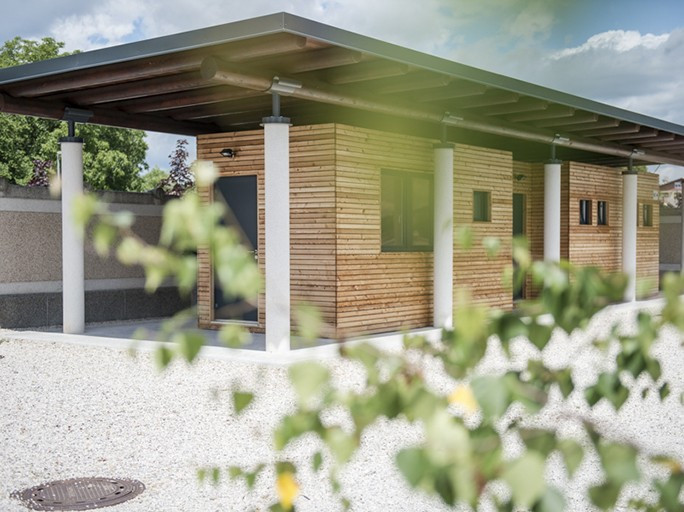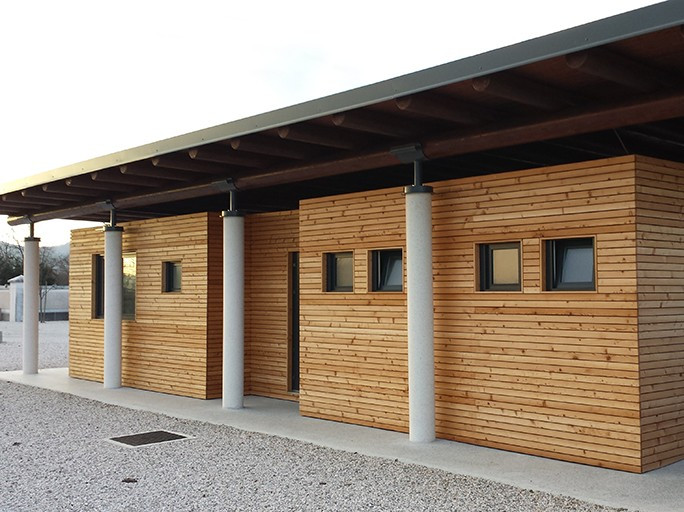Commercial building solutions
The construction industry has the reputation of being very conservative and unwilling to change its own ways. However, big strides in technology which enable much more involved planning and estimating, as well as better monitoring during construction, are rapidly changing this industry. Moreover, there have been significant changes in the way buildings are constructed and materials used. A bigger stress is placed in using sustainable materials and constructing more environmentally friendly structures which are also modern and comfortable.

Technological advancement
New technologies in the software industry have a big impact on many different industries and the construction industry is no exception. More powerful computers with advanced software as well as new ways of processing data enable a much more involved process of planning and estimating. This supports a more close-knit cooperation among different professionals who are partaking in construction and often enable better residential and commercial building solutions.
Cloud operating system supports storing bigger amounts of data than ever before and provides easy access to it from different devices, including mobile devices. It enables a much closer cooperation among different segments in the planning and estimating, as well as the actual construction of a project. The easily available data radically reduces mistakes due to miscommunication or lack thereof.
BIM (Building Information Modeling) is another exiting new trend in the construction industry. It is a 3D (and sometimes 4D) representation of a given projects – with its physical as well as functional characteristics which enable engineers, architects and construction companies to gain a better understanding of the end result of the project. This guarantees better estimating of the materials and labor needed, as well as planning of the construction. A BIM representation of a project represents a solid base of data for all the different segments in the construction process.
Similar to BIM technology is AR (augmented reality) and VR (virtual reality). A project represented in these new ways helps professionals and investors to experience it in a more visual and ‘natural’ way and, therefore, reduces unwanted features well before the construction even starts.
Prefabrication and modular solutions
Prefabrication of buildings or parts of them is on the increase. Off-site construction proves its worth with many benefits, the biggest one being the low cost of production and erection on site. Prefabricated or modular solutions can be erected in a shorter time and with simpler tools which means the cost of labor is much lower. Moreover, prefabrication in factories has its additional advantages: factories are controlled environments which eliminate all weather related problems, especially rain, moisture and dirt. This means there are fewer possibilities that materials might be damaged because of the elements, which consequently means higher quality products. Because of standardization of the elements the production is faster and all potential waste can be recycled, making the production much more environmentally friendly.
Low costs of prefabrication and modular construction are not the only advantages of this kind of construction. The main positive characteristics of prefabricated elements are their flexibility and adaptability. Their elements can be easily combined in advanced modular solutions which accommodate specific needs of a project. In many cases they can be easily assembled and disassembled which only increases their versatile usefulness. These modular solutions provide clients with all the amenities of classically constructed buildings at a much lower cost.

Sustainability in construction industry
People are more aware of the environmental issues and that also impacts their decisions regarding constructing and investing in the construction industry. Sustainability in the construction industry is shown in the use of procedures that are more energy efficient, reduction of waste and pollution, as well as in responsible use of materials. The use of natural materials which are available locally, is on the increase; as well is the stress of using more environmentally friendly materials which are harmful neither to people’s health nor to the environment.
Regarding the use of materials, the trend is also to use materials which are not needed anymore in one project and reuse them in another project. In the past construction companies discarded used materials, for example from demolition sites, but now they are reusing those still in good condition in new projects. This is not only to reduce the cost of the materials but also to have less of an impact on the environment. The trend of reusing and repurposing is seen also in buildings themselves: especially in urban areas old abandoned buildings such as old factories or warehouses are repurposed. A lot of the times these creative space solutions revive whole neighborhoods and spur new wave of other commercial building solutions that have even bigger impact on those urban areas.
The construction industry is no longer a cumbersome industry which is resisting the new trends. The ever more present use of new technology, advanced modular solutions and more environmentally friendly approaches are making this industry more vibrant and modern as ever.